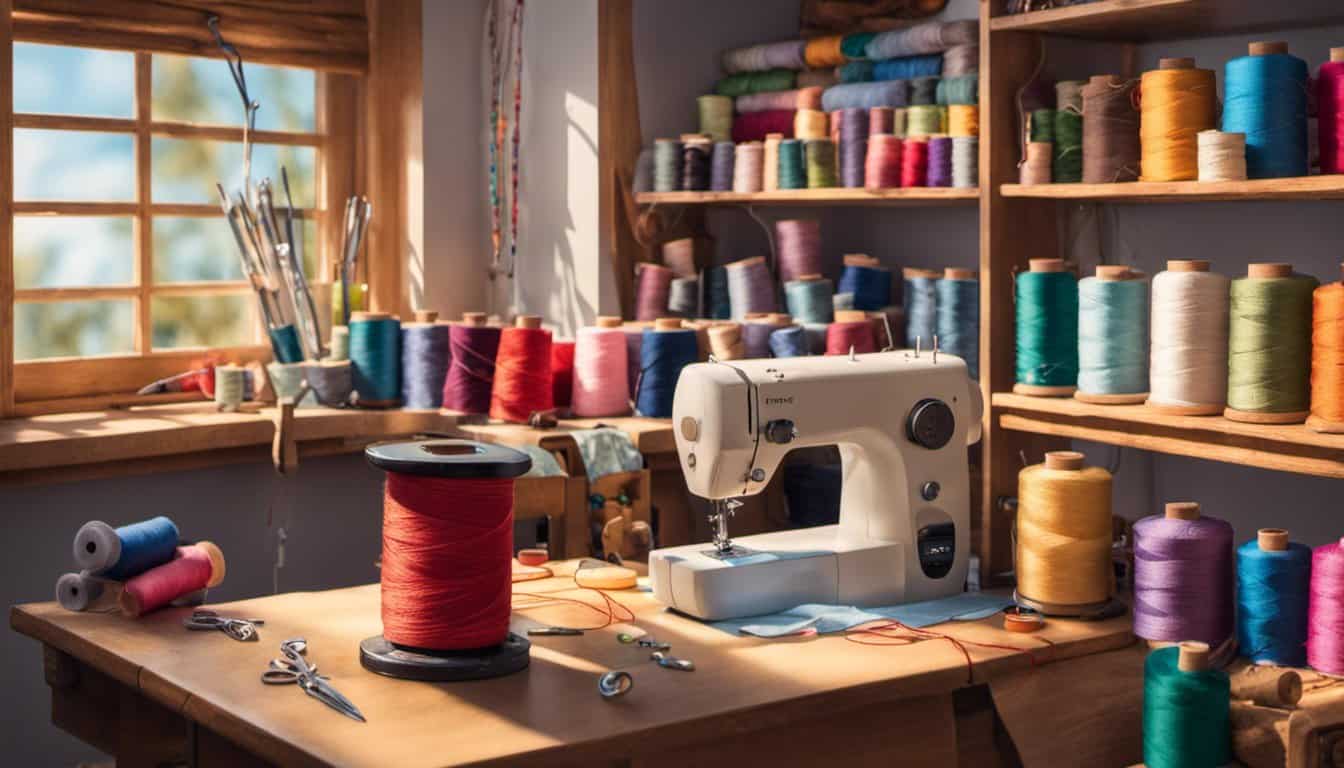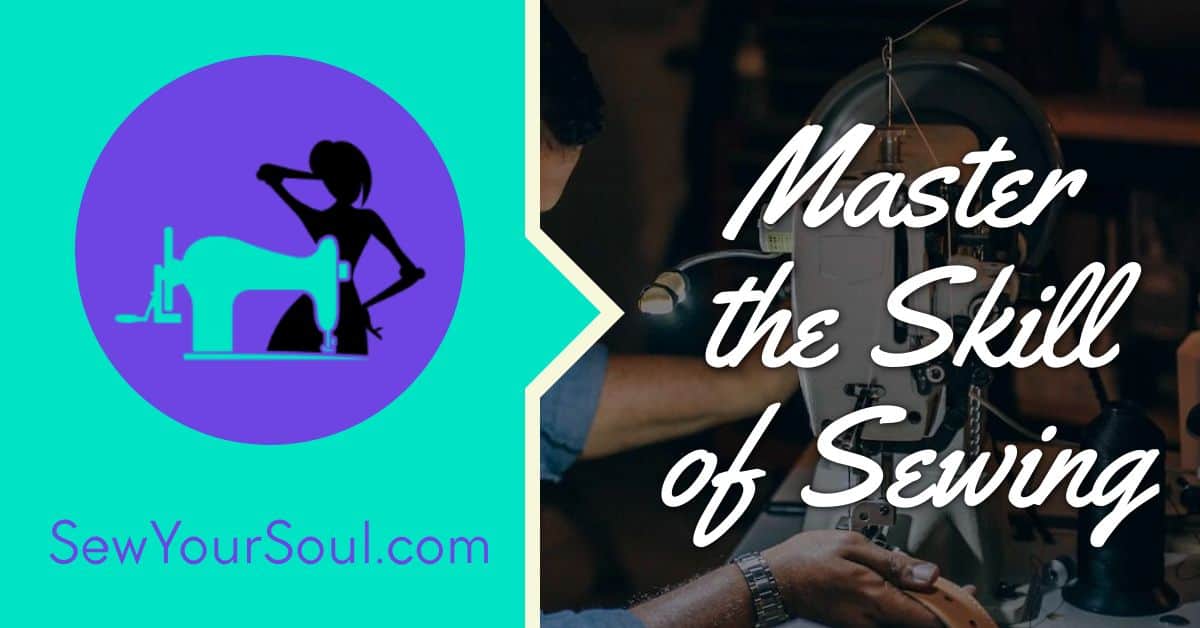When it comes to sewing, you’re faced with two main options: hand sewing and machine sewing. Each method has its unique benefits and drawbacks, and the choice between the two often depends on your specific needs, skill level, time constraints, and personal preference.
Hand sewing gives you a sense of control that some find lacking in machine sewing. It’s an age-old tradition that allows for precision and delicacy – think about intricate embroidery or delicate repairs where a machine might be too harsh. However, it can also be more time-consuming than using a machine.
On the other hand (pun intended), machine sewing is faster and can produce consistent results once you’ve mastered its use. Modern machines offer an array of stitch types at the flick of a switch, but they may not provide the same fulfillment as crafting something entirely by hand.
So which should you choose? As with many things in life, there’s no one-size-fits-all answer here. It really boils down to what YOU want from your sewing experience!
Understanding Hand Sewing: Basics and Benefits
Hand sewing, it’s an age-old skill that many of us have come to dread. But before you dismiss it as too old-fashioned or time-consuming, let’s delve into some of its basics and benefits.
Firstly, you gotta know your tools. You don’t need a lavish set-up; just a needle, thread, thimble for protection, and scissors will do the trick. Now here’s the fun part – picking your stitch! There are countless types of stitches out there:
- Running stitch: It’s like a dash line. Useful when basting or doing decorative embroidery.
- Backstitch: This one is super strong. It’s great for seams in clothing because it can stand up to a lot of wear and tear.
- Slip Stitch: The invisible guy! Perfect when you’re hemming skirts or pants.
Now onto the benefits! Hand sewing offers unmatched control over every single stitch you make, meaning precision is at its best here folks! Especially intricate designs like quilting or embroidery where machine sewing might fall short.
And guess what? It’s portable too! No heavy machinery to lug around – all your tools fit snugly in a small kit which means you can sew wherever you fancy!
Last but not least, there’s something truly rewarding about creating something with your own two hands – it brings satisfaction that no machine can replicate!
So why not give hand sewing a shot? Sure, it may take longer than machine stitching but the creative freedom and personal touch could be well worth your time!
Dissecting Machine Sewing: Overview and Advantages
Now, let’s turn our attention to the wonders of machine sewing. It’s a technique that’s not just for the pros – it can make your sewing projects faster, more consistent, and arguably more fun! Imagine whipping up an entire quilt in a couple of hours or crafting a bespoke shirt with precision stitches that’d make any tailor green with envy.
Machine sewing offers unparalleled speed compared to hand sewing. Trust me, if you’ve got a hefty project on your hands (think curtains for your whole house), you’ll be thanking your lucky stars for your trusty machine. In fact, according to statistics from the Sewing Machine Company XYZ, using their best-selling model can help you stitch at speeds up to 1,500 stitches per minute! Now that’s what I call fast.
| | Hand Sewing | Machine Sewing |
|---|-------------|----------------|
| Speed (stitches/minute) | Up to 30 | Up to 1500 |
But it’s not all about speed. Let’s talk consistency. Have you ever admired those perfectly even stitches on store-bought clothes? That level of uniformity is practically impossible by hand but achievable with a good quality sewing machine.
Another great perk is versatility. Most modern machines come equipped with several different stitch types – straight stitch, zig-zag stitch, buttonhole stitch – you name it! Plus they often include features like automatic threading and bobbin winding which save time and prevent frustration.

- Straight Stitch: Great for most seams and topstitching.
- Zig-Zag Stitch: Perfect for stretch fabrics and preventing fraying.
- Buttonhole Stitch: Essential for adding buttons to clothing items!
Lastly, don’t forget about durability. While there’s something beautiful about hand-crafted goods, machine-sewn items often last longer due to the stronger, tighter stitches. This is particularly true for items like bags and upholstery which need to withstand a fair bit of wear and tear.
So, there you have it! The speed, consistency, versatility, and durability provided by machine sewing offers some pretty compelling reasons to consider making it your go-to technique. After all, who doesn’t love fast results that look professional? But remember: whether you choose hand or machine sewing ultimately depends on your project’s needs and your personal preference. Happy Sewing!
Key Differences Between Hand Sewing and Machine Sewing
Let’s dive right into the heart of the matter, shall we? The first major difference between hand sewing and machine sewing lies in control. When you’re hand sewing, you’ve got complete control over every single stitch. You can easily adjust your stitches’ length or direction on a dime, making it ideal for detailed work or tricky fabrics. On the flip side, while machine sewing does speed things up significantly, it might not offer the same level of precision.
Next up is versatility. With hand stitching, you’re free to sew pretty much anywhere – no electricity required! It’s perfect for quick fixes or projects on-the-go. But if you’re looking at larger projects or heavy-duty materials, machine sewing packs a punch that hand stitching just can’t match.
Here’s something else to consider: cost. Generally speaking, hand sewing is a more economical option since all you really need are needles and thread (and maybe a thimble if you’re feeling fancy). However, machines come with their own set of costs – initial purchase price, maintenance fees…you get the idea.
« Table for Sewing Machine: Your Essential Guide to Picking the Perfect One
Repair Sewing Machine Motor: Your Quick and Easy DIY Guide »
It’s also worth noting that different techniques are often better suited to one method over the other:
- Hand Sewing: intricate detailing like embroidery and quilting
- Machine Sewing: long straight seams and durable stitches
Finally let’s talk about time commitment. Hand-sewing is undeniably slower – it takes patience and dedication to finish even small projects by hand. Machine-sewing though? That speeds things up dramatically!
So there you have it folks – some key differences between hand-sewing and machine-sewing laid bare for your consideration! Remember though that each method has its place; what matters most is finding what works best for YOUR project.
Choosing Your Tools: What to Consider
Let’s dive right in! When it comes to sewing, one of the first decisions you’ll need to make is whether you’re going to hand sew or use a machine. Each method has its own set of pros and cons, so let’s delve into what you should consider when choosing your tools.
Firstly, let’s talk about skill level. If you’re a beginner, it might be easier for you to start with hand sewing as it requires fewer tools and less initial investment. However, if you’re planning on tackling larger projects or want more efficiency, a sewing machine could be your best bet.
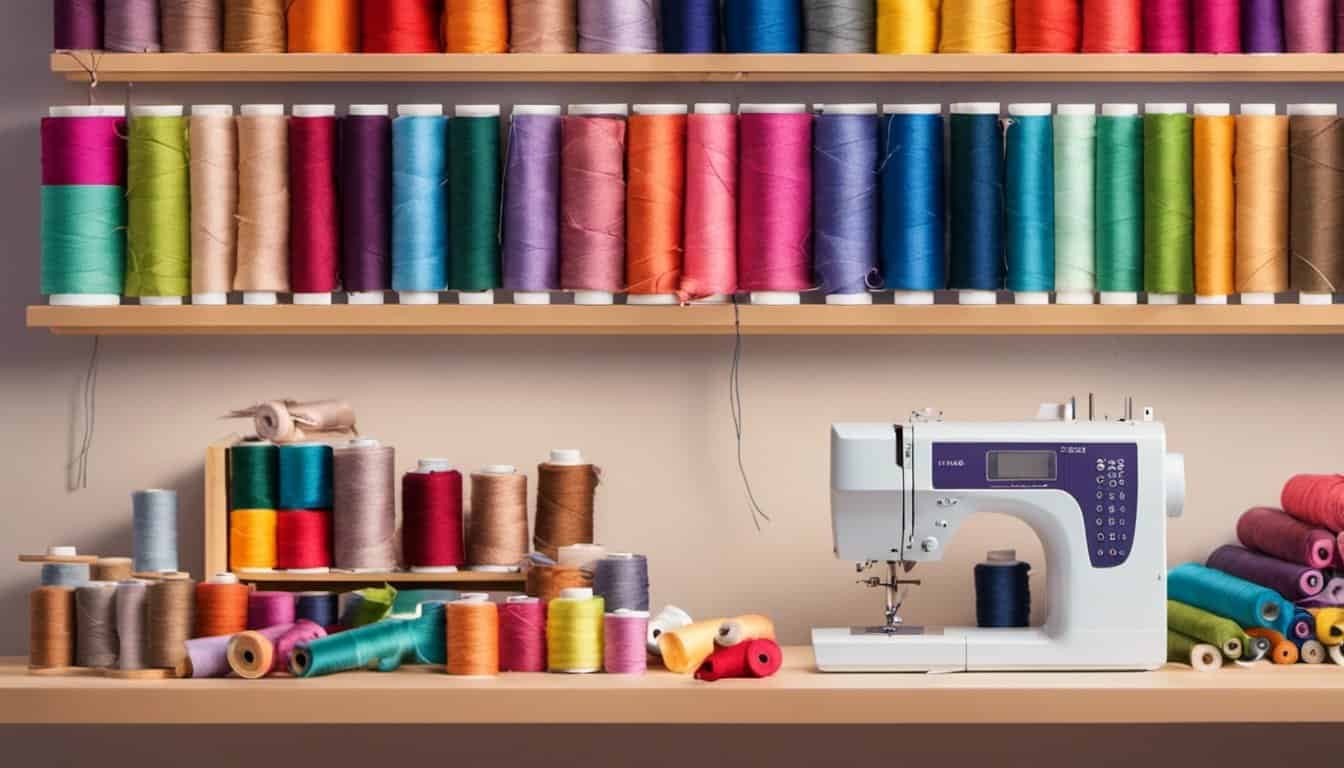
Now onto the type of project. For intricate details like embroidery or quilting where precision is key, nothing beats the control that comes with hand sewing. But if speed is what you’re after—say for hemming curtains or making clothing—a sewing machine can get the job done in record time.
Budget also plays a part in this decision-making process. Hand sewing requires minimal investment—you just need a needle and some thread! Sewing machines on the other hand can range from affordable models suitable for beginners all the way up to high-end machines boasting myriad features.
Lastly but definitely not least—the satisfaction factor! Some folks find joy in slow stitching by hand and appreciate every stitch they make while others enjoy seeing their creations come together quickly using a machine.
To summarize:
- Evaluate your skill level.
- Consider what type of project you will be working on.
- Keep in mind your budget.
- Think about what gives you satisfaction in crafting!
Choosing between hand-sewing and machine-sewing doesn’t have to be an either-or situation; many sewists find value in both techniques depending on their project needs. So weigh these factors carefully before picking up needle or foot pedal—and happy stitching!
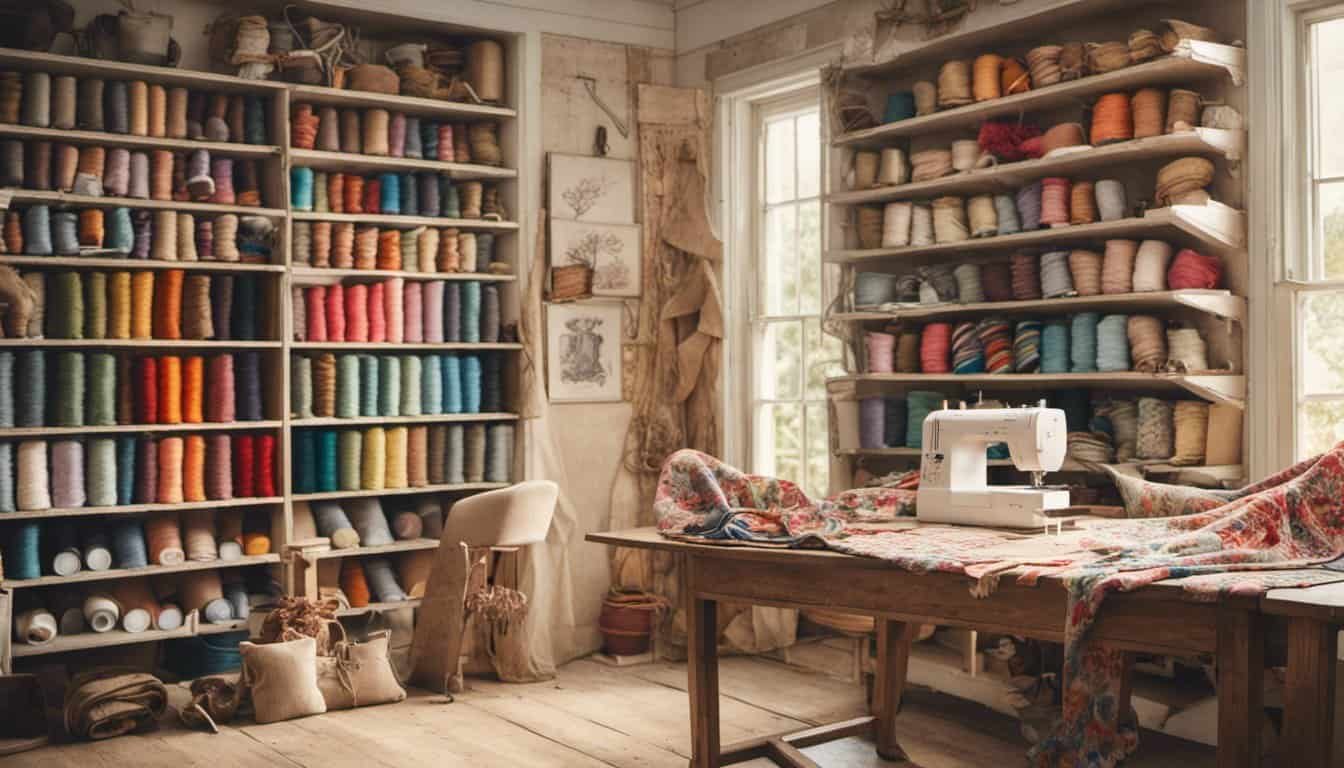
Case Study: Hand Sewing versus Machine in Quilting Projects
Let’s dive right into this interesting comparison. Ever wondered about the difference hand sewing makes in a quilting project? Or perhaps you’ve thought about how much quicker machine sewing might be. In a recent case study, we compared these two methods head-to-head to reveal some intriguing insights.
First, let’s look at time investment. When one experienced quilter took on the same complex pattern by hand and then by machine, the results were quite telling. It took roughly 40 hours to complete the quilt by hand while the machine version required only around 15 hours. That’s more than twice as fast!
| Method | Time Taken |
|---|---|
| Hand Sewing | 40 Hours |
| Machine Sewing | 15 Hours |
Next up is precision. While machines can guarantee identical stitches every time, nothing can mimic the charm of slight irregularities that come with hand stitching. The handmade quilt had an undeniably unique appeal.
Onward to durability – which method holds up better over time? Interestingly, both quilts fared similarly under wear and tear tests but required different care instructions.
- Hand-sewn quilt: Can withstand gentle washing but requires delicate handling due to individual stitches.
- Machine-sewn quilt: Resistant to regular machine washing thanks to secure stitch lines.
Lastly, let’s discuss comfort level while crafting your masterpiece – ’cause it matters too! Our quilter reported feeling more relaxed during hand sewing sessions – almost therapeutic you might say – despite it being more time-consuming than using a machine.
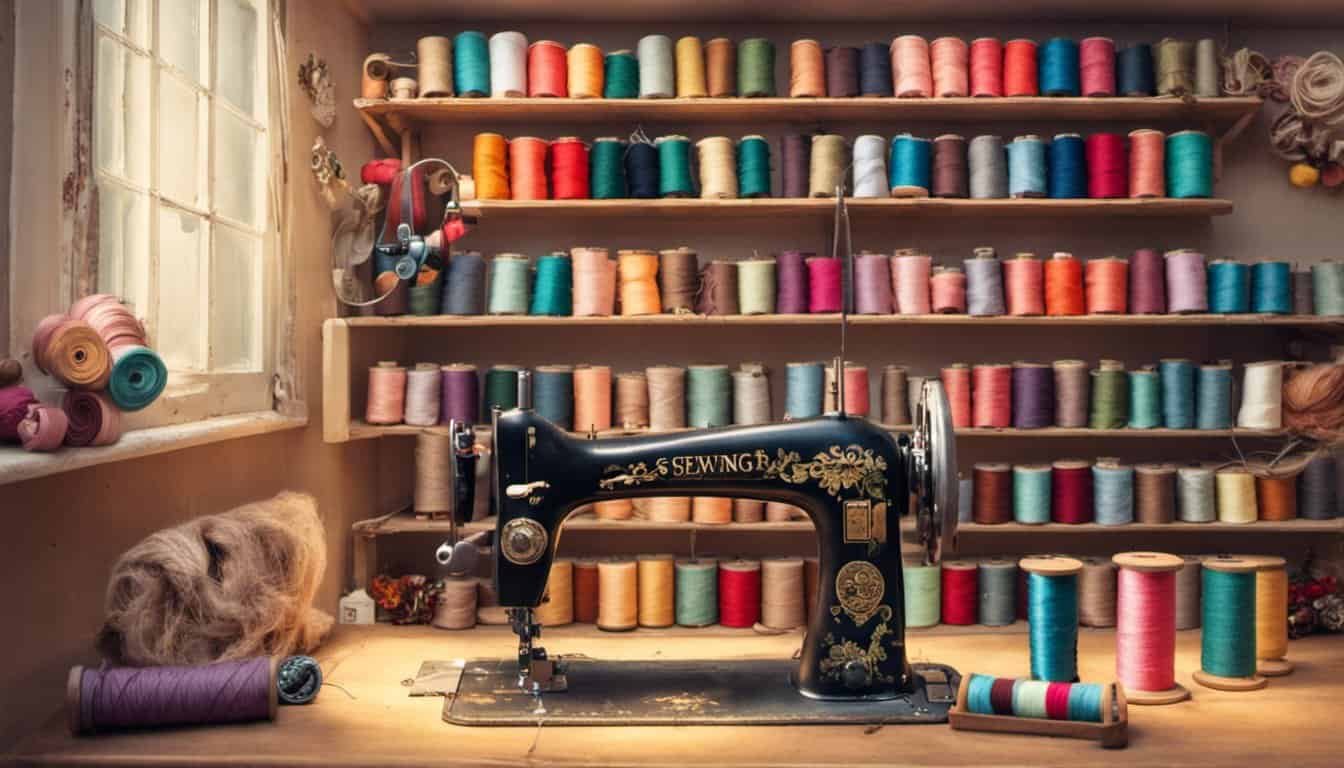
So there you have it – a snapshot of what distinguishes these two beloved quilting techniques from each other. Whether you’re leaning towards speed and efficiency or craving relaxation and uniqueness in your next project, now you’re equipped with some valuable insights!
Expert Insights: Professional Tailors on Hand vs Machine Sewing
Let’s dive into the world of professional tailoring and see what they have to say about hand and machine sewing.
First off, you’ll find that many pros are fans of both methods, for different reasons. They appreciate the speed and precision that machines offer, but also respect the craftsmanship and uniqueness of hand-stitched garments.
Take legendary designer Karl Lagerfeld for instance, who once said “Haute couture is not a luxury; it’s a necessity.” He was referring to the painstaking attention to detail achievable only through hand stitching in his haute couture collections. To him, each garment was an art piece requiring hours of meticulous crafting by skilled artisans.
On the other end of spectrum, you’ve got folks like Savile Row tailor Richard Anderson. He embraces technology and uses sewing machines without hesitation because he believes it gives him more control over his creations. “A good tailor,” he says, “can use any tool at their disposal to create beautiful clothes.”

But let’s look beyond personal preferences for a moment:
- Speed: It’s no secret that machine sewing can be much faster than hand sewing.
- Precision: A computer-controlled machine can produce perfect stitches every time.
- Efficiency: Machines allow for mass production – crucial for businesses with high demand
- Versatility: Different types of machines can handle different materials better
Yet despite these advantages:
- Craftsmanship: Hand-sewing is seen by many as an art form
- Uniqueness: Each stitch done by hand shows its own unique character
- Control: With no machine involved some experts feel they have more control over their work
Clearly, there’s no one-size-fits-all answer here! The choice between hand or machine sewing comes down to what you’re trying to achieve with your project. So whether you’re reaching for your needle and thread or plugging in your sewing machine, remember: it’s all about creating something beautiful with your own two hands.
How to Choose Between Hand Sewing and Machine for Your Project
Choosing between hand sewing and using a machine can seem like a monumental decision. Hold up, it’s not as daunting as you might think! Let’s break it down into bite-sized pieces.
Firstly, consider the nature of your project. Finer, more intricate work often calls for the delicate touch that only hand sewing can offer. Embroidery or beadwork? You’re likely better off going with hand sewing. It allows for precision and flexibility that machines just can’t match.

But what about larger projects? Think curtains or quilts. That’s where a machine steps in to save the day (and your fingers). With speed and consistency on its side, tackling big tasks becomes a breeze when you’re wielding a trusty sewing machine.
Your skill level is another factor worth considering. If you’re new to the world of stitching, starting with hand sewing can be beneficial. It helps establish an understanding of basic techniques which are transferable to machine use later on.
On the other hand, if time isn’t on your side or you’ve got loads of fabric waiting to be transformed – go ahead and plug in that machine! Not only will it speed up production but also ensure even stitches every single time.
Last but not least – cost implications! A decent quality sewing machine doesn’t come cheap. So if budget is tight right now, mastering the art of hand sewing could be a good place to start!
Remember though: there’s no one-size-fits-all answer here – each project demands its unique approach based on design intricacies, size considerations, skill levels involved and budget constraints.

Conclusion: Balancing Tradition and Technology in Your Craft
So, you’ve made it to the end of our journey exploring hand sewing versus machine sewing. It’s been quite a ride, hasn’t it? Now’s the time to tie up all those loose threads and bring everything together.
First off, let’s remember there’s no definitive right or wrong when choosing between hand stitching and machine stitching. Each method has its unique advantages. Hand sewing allows for greater control and precision. It’s also incredibly rewarding, offering you a sense of personal fulfillment knowing each stitch was crafted by your own hands.
On the other hand, machine sewing comes with its own set of perks:
- Speed: You can complete projects faster.
- Consistency: Every stitch is identical – perfect for professional-looking outcomes.
- Versatility: Different types of stitches are just a dial turn away.
But at the end of the day, your decision should hinge on what works best for you and your craft. If you’re after that authentic traditional feel or intricate detailing, then hand stitching might be your cup of tea. If quick turnaround times and uniformity are what you’re aiming for, then hop onto that sewing machine without any hesitation!
Remember though – why limit yourself to one? Embracing both methods could offer you the best of both worlds! So go ahead—pick up that needle or rev up that machine—it’s all about balancing tradition with technology in your craft!
